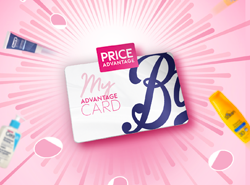From symptoms to treatments, let’s explore the ins & outs of male thrush
What is male thrush?
You might be wondering, "What exactly is male thrush?”. Well, it's a yeast infection caused by a fungus called candida albicans which doesn’t usually cause any problems. It isn’t classed as a sexually transmitted infection (STI). Anyone can get thrush so don't worry, you're not alone – it's more common than you think.
Thrush happens when candida grows out of control and this tends to happen in areas that are warm and moist. So even though candida can live on the skin of the penis without causing any harm, if the conditions are right (warm and damp), it can grow and cause an infection. Conditions can include:
• Hot weather
• Wearing tight underwear or clothing
• Not drying properly after showering or exercising
• Not cleaning the area under the foreskin – this area should be cleaned gently every day when you’re washing. You can do this with just water or water and a gentle soap. If your foreskin doesn’t fully pull back, don’t try and force it
It can also grow if the balance of good bacteria on the skin changes. This can happen if:
• Your skin gets damaged or irritated
• You’re taking antibiotics
• You have diabetes that isn’t well controlled
• You have a weakened immune system
Can you catch thrush from a female partner?
Thrush can be passed on through having sex, but this isn’t very common. If your partner has thrush, there’s a chance you could catch it too, so it’s best to avoid having sex until you’ve completed a course of treatment and infection has cleared up.
Spotting male thrush
While it might be an unwelcome guest, it isn’t usually anything to worry about in most cases. Keep an eye out for these symptoms:
• Irritation, burning and redness around the head of the penis and under the foreskin (this redness might be harder to see on black or brown skin)
• A white discharge which is similar to cottage cheese
• An unpleasant smell
• Finding it hard to pull back your foreskin
• Pain when weeing
Most people who have thrush won’t need a test to confirm it. If you think you have thrush and you’ve been diagnosed with thrush in the past, you can speak to a pharmacist about over-the-counter treatment from your pharmacy.
Treating thrush
Thrush is usually treated with an antifungal medicine. This could be a tablet you take or a cream to help relieve any irritation. Once you’ve started your treatment, it should clear up within seven to 14 days. Unless your partner has symptoms, there isn’t a need to treat them too.
How can my pharmacist help?
Your pharmacist can help with advice and recommending treatment options. For example, they might recommend antifungal medicines if you’ve had thrush diagnosed before. If you’re worried about talking about it in an open space, you can always ask if they have a private area for you to talk. Most Boots stores offer a private consultation room in the pharmacy area.
Make sure you aren’t using antifungal medicines more than twice in a six-month period without speaking to a pharmacist or GP first.
What if my thrush keeps coming back?
Sometimes thrush can come back after treatment. In these cases, you might need to take treatment for longer (this can be up to six months), especially if you get it more than four times in a year. Before you begin treatment, your GP can help to check if something is causing your thrush, like sex. They’ll also recommend how often you should use your treatment for.
It’s usually best to make sure that your thrush has cleared up and you’ve completed a course of treatment before having sex.
If you do have sex during treatment, it’s important to know that antifungal creams can damage condoms and diaphragms which means your contraception might not work.
In some cases, you might need to speak to your GP. They’ve seen it all before and trust us, they aren’t judging. Getting help quickly can nip the problem in the bud and save you from discomfort down the road. Make sure to speak to your GP if:
• You have symptoms of thrush for the first time
• You have thrush and you’re over 60 or under 16
• Your thrush keeps coming back (more than four times in a year)
• Your treatment hasn’t worked
• You have thrush and your immune system is weakened for example if you have diabetes, HIV or are undergoing chemotherapy
A sexual health clinic might also be able to help if you think you have thrush.
Preventing thrush
From sweaty gym sessions to snug underwear, various factors can cause thrush. While thrush can be a nuisance, there are steps you can take to help prevent it and ease it if you do have it, like:
• Cleaning your penis regularly
• Avoid sex until thrush has cleared up if sex is uncomfortable
• Avoiding using perfumed soaps or shower gels on your genitals as these can cause irritation
• Making sure to dry your penis properly after washing it
• Wearing loose-fitting cotton underwear. This can help prevent moisture building up under your foreskin – less moisture means less of a chance of the candida yeast being able to multiply
There’s no shame in looking after your health. Thrush in men can feel awkward to talk about, but taking care of it early can save you from a whole lot of discomfort.







